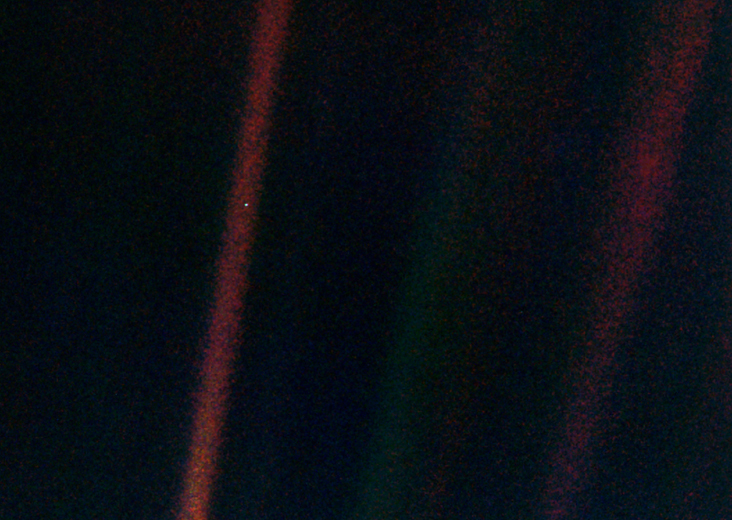Yesterday I spoke about the Philae comet lander. It is 300 million miles from Earth, and it made me wonder what the farthest out photograph ever taken was. Hmm, that sounds like pretty awkward English. Question, what space photograph was taken farthest from Earth? Ah, better!
On September 12, 2013, NASA announced that Voyager 1 had crossed the heliopause and entered interstellar space on August 25, 2012. That statement alone gives me goose bumps. But as for photographs, I’d like to start with Figure 1 which was actually taken by Voyager 2 of the planet Neptune at approximately 2.8 billion miles from Earth. Quick calculation friends, that’s about ten times further out than Philae and its comet. The Neptune image is so beautiful that I could not resist showing it.
But there are images from even further out! On February 14, 1990, at the suggestion of astronomer and fellow dreamer, Carl Sagan, NASA turned the cameras of Voyager 1 around and photographed all of the solar system from approximately 4 billion miles out. I think that so far this is the “farthest out” photograph ever taken. In this photograph planet Earth is a pale blue dot, a crescent 0.12 pixels wide.
On December 6, 2014 NASA will wake up its New Horizon’s space probe for the last time on its journey to Pluto and the Kuiper asteroids. That rendezvous is scheduled for next July 14th.


